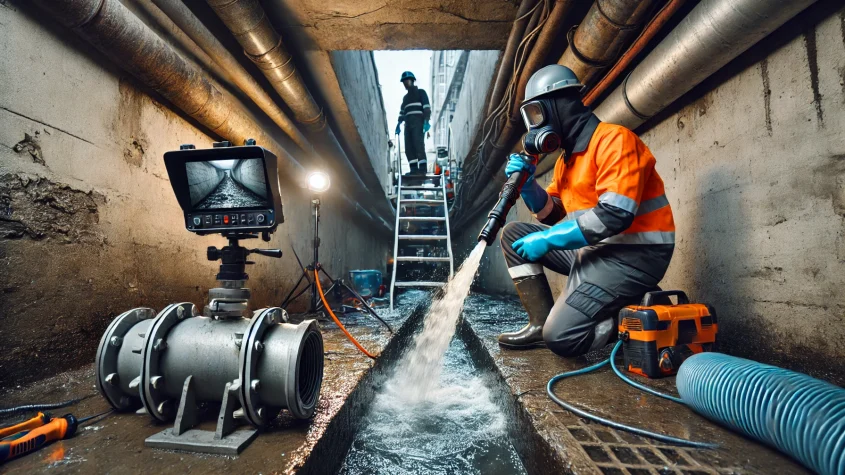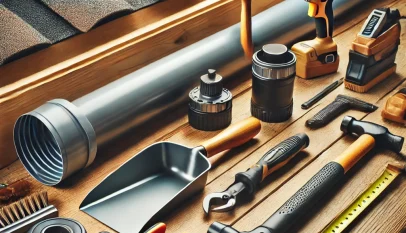
Drainage cleaning is an essential maintenance task that ensures plumbing systems function properly and efficiently. Regular cleaning helps prevent clogs, unpleasant odors, and potential damage to pipes, saving time and money in the long run. Ignoring drainage issues can lead to larger problems, including backups and extensive repairs.
Understanding the methods of drainage cleaning can empower homeowners and property managers to take proactive steps in maintaining their systems. Various tools and techniques are available, from simple DIY solutions to professional services. Assessing the best approach depends on the severity of the issue and the specific setup of the drainage system.
Staying informed about best practices for drainage cleaning not only enhances performance but also prolongs the lifespan of plumbing systems. A clean drain can significantly improve the overall health and hygiene of a living or working space, creating a more pleasant environment for everyone.
Understanding Drainage Systems
Drainage systems are crucial components of any building’s infrastructure. They ensure that excess water is effectively removed, preventing potential structural damage and health hazards. Recognizing the types of drainage systems, common causes of blockages, and signs of drainage issues can help in maintaining their efficiency.
Types of Drainage Systems
There are several types of drainage systems designed to manage water effectively.
- Surface Drainage: This system collects rainwater and surface runoff, directing it away from properties. It typically involves ditches, swales, and gutters.
- Subsurface Drainage: Used primarily in agricultural settings, it utilizes pipes below the ground to remove excess moisture from the soil. This system prevents waterlogging.
- Stormwater Drainage: Designed to handle rainwater, storm drains often include catch basins and piped systems to channel water into storm sewers.
Each type serves a different purpose and operates based on the specific requirements of the area.
Common Causes of Blockages
Blockages can significantly hinder the performance of drainage systems.
- Debris Buildup: Leaves, dirt, and other organic materials often accumulate, causing clogs.
- Grease and Fat: In kitchen drainage, grease buildup is a common issue that can lead to severe blockages.
- Tree Roots: Roots can infiltrate underground pipes, leading to obstructions that restrict water flow.
Identifying these causes allows for timely maintenance and cleaning.
Signs of Drainage Issues
Recognizing the early signs of drainage issues can prevent more significant problems later.
- Slow Draining Water: If sinks, toilets, or floor drains are draining slowly, it may indicate a clog.
- Unpleasant Odors: Foul odors emanating from drains often suggest a blockage or buildup within the system.
- Puddles and Water Accumulation: Excess water pooling in yards or near foundation points can signal failing drainage.
Being observant of these signs can facilitate prompt action and maintenance to keep drainage systems functioning properly.
Best Practices for Drainage Maintenance
Effective drainage maintenance involves a series of practices designed to ensure optimal function and longevity of drainage systems. Key elements include regular inspections, natural cleaning solutions, and proactive preventative measures that contribute to sustained drainage health.
Regular Inspection and Cleaning
Routine inspections are essential for identifying potential blockages and damage. It is recommended to inspect drainage systems at least twice a year, focusing on visible parts and accessible areas. Look for signs of wear, such as cracks or leaks, and check for accumulated debris.
Cleaning drains prevents clogs and maintains flow. Homeowners can perform simple tasks, such as removing leaves and debris from grates and gutters. Professional cleaning services can be employed for more extensive cleanouts, ensuring that pipes are cleared of grease, roots, and other obstructions.
Natural Drain Cleaning Solutions
Using natural solutions for cleaning drains is environmentally friendly and effective. Baking soda and vinegar create a chemical reaction that can dissolve minor clogs. Pour half a cup of baking soda down the drain, followed by half a cup of vinegar. After a short waiting period, flush with hot water.
Another effective natural cleaner is boiling water. Regularly pouring boiling water down the drain can help eliminate soap scum and grease buildup. Additionally, enzyme-based cleaners are available and are excellent for breaking down organic materials without harmful chemicals.
Preventative Measures
Preventative measures can significantly enhance drainage system functionality. Installing screens or filters over drains helps catch debris before it enters the system. Regularly trimming trees and plants near drainage areas reduces the risk of root intrusion.
Educating household members about what should not be flushed can minimize blockages. Items like wipes, grease, and food particles should never enter the drain. Regularly scheduled professional maintenance can also detect issues early, preventing more significant, costlier repairs down the line.
Bathroom Renovation Hamilton: Transforming Your Space with Expert Solutions
Bathroom renovations in Hamilton can significantly enhance both the functionality and aest…









